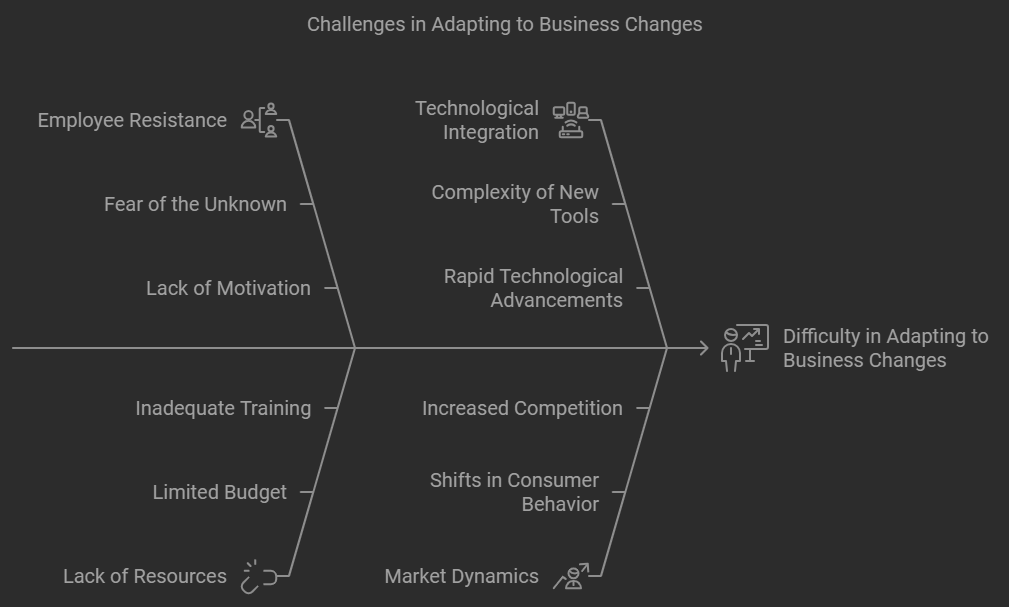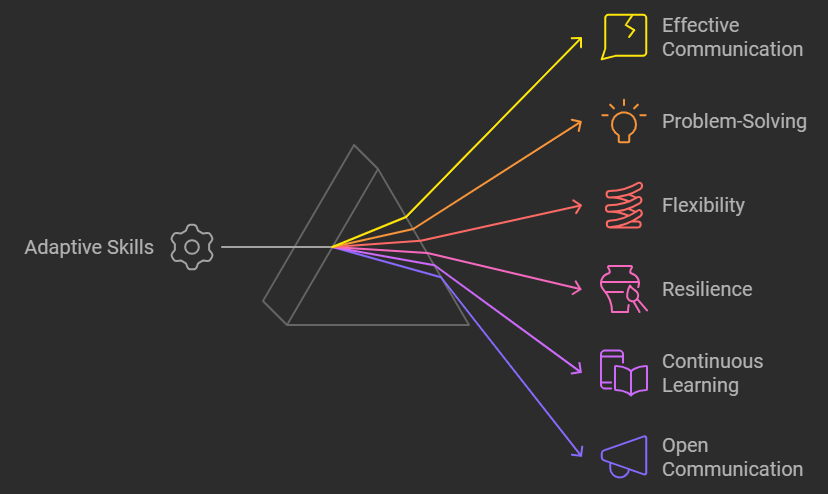Adaptive Strategies: A Quick Overview
Adaptive strategies are ways people and organizations change to deal with new situations. They can be anything from personal habits to business plans. These strategies help us handle the constantly changing world. This article will explain the basics of adaptive strategies, how they work, and why they’re crucial in today’s fast-paced society. Whether you want to improve your own adaptability or strengthen your organization’s resilience, knowing about adaptive strategies is a good start.
Understanding Adaptive Strategies
What Are Adaptive Strategies?
Businesses use five adaptive strategies: foraging, horticulture, pastoralism, intensive agriculture, and industrialism. Each has its own economic and sociocultural impacts. It’s important for businesses to adapt to changes in the market, technology, and consumer preferences. This adaptability helps them stay relevant and competitive. Businesses need good communication, strong leadership, strategic planning, data analytics, and innovation to succeed.
These tools help businesses adjust their strategies, find new opportunities, and handle market changes effectively.
The Importance of Being Adaptive in Business
Businesses today need to adapt to survive and succeed. Like societies in history, businesses also need to evolve in response to market shifts, new technologies, and changing consumer behavior. To be adaptive, businesses can use scenario planning and agile methods and embrace innovation at all levels. Staying flexible, open to change, and regularly reevaluating their approach helps maintain a competitive edge and long-term success.
Employees need problem-solving, creativity, and effective communication skills to handle challenges. Tools like data analytics, market research, and trend analysis can help anticipate market changes. Being proactive and continuously evolving helps businesses thrive in a fast-paced business world.
The Big Five: Adaptive Strategy Steps

Spotting Changes: How to Identify
Businesses can spot changes in the business environment by researching market trends, conducting comprehensive competitive analysis, and monitoring customer behaviors and preferences.
To remain relevant and competitive, a business must identify and adapt to changes in its industry or market.
Failure to adapt can lead to loss of market share, decreased revenue, and even business closure.
Some common challenges that businesses face when trying to spot and adapt to changes include employees’ resistance to change, a lack of resources or expertise in the new technology, and uncertainty about the potential impact of the change on the business.
For example, the Internet has forced many traditional brick-and-mortar retailers to adapt to e-commerce platforms to remain competitive.
Additionally, some companies fail to keep up with changes in consumer behavior, such as increasing environmental awareness and the preference for sustainable products, resulting in a loss of market share in favor of more socially responsible competitors.
Getting Ready: Setting Up for Change
Businesses need to be prepared for necessary changes in the market or industry. Five adaptive strategies, foraging, horticulture, pastoralism, intensive agriculture (rural state), and industrialism, can be used.
For example, foraging involves using biodiversity to meet the needs of small, mobile groups. Horticulture involves low-intensity farming using simple tools best suited for small, dispersed communities. Pastoralism is a form of subsistence agriculture where livestock is herded to pasture.
These strategies help businesses adapt to changes and handle problems that may arise. By studying these strategies, businesses can develop the skills and tools to effectively manage change and solve any issues. They also provide insight into different cultures and social structures, preparing them for evolving market or industry dynamics.
Taking Action: Making the Changes
Adapting to change requires strategic planning, organization, and enough resources. Changes can be due to new technology, market demands, or social structures. Teams should focus on continuous learning, stay open, and ask for feedback to handle these changes. This may involve training staff, reorganizing, or improving employee benefits. New technologies, like AI, can improve operations, especially in a production environment.
Problem-solving in multiple steps can help companies make the most of this technology, quickly putting new tools to work. Companies also need to prioritize inclusivity and appreciate every contribution. These adaptive strategies are part of an ongoing improvement process that ensures success in the modern world while staying relevant.
Checking the Results: How to Review Changes
Effective methods for reviewing and evaluating changes implemented in a business include:
- Conducting performance evaluations.
- Gathering feedback from employees and customers.
- Analyzing financial data.
- Comparing current and past performance metrics.
Regularly assessing the impact of changes ensures that the business produces the desired results and meets set objectives. Key indicators and metrics to evaluate the success of implemented changes in a business include:
- Sales figures
- Customer satisfaction ratings
- Employee productivity levels
- Market share data
These metrics provide valuable insights into the effectiveness of the changes and help the business make informed decisions about future strategies and adjustments.
Keeping it Going: Sustaining Changes
By implementing adaptive strategies, businesses can sustain changes over the long term. These include foraging, horticulture, pastoralism, intensive agriculture, and industrialism. By carefully considering environmental influences and understanding the unique characteristics of each strategy, organizations can adapt to changing conditions and ensure long-lasting success.
Necessary skills and tools for sustaining organizational changes include effective leadership, clear communication, and the ability to anticipate and navigate potential obstacles. Common challenges that arise when trying to sustain changes include resistance from employees, lack of resources, and the inability to integrate new practices effectively. These challenges can be effectively addressed by promoting employee involvement, providing adequate training and support, and establishing clear and achievable goals for the organization.
Businesses can sustain changes and thrive in an ever-evolving market by utilizing adaptive strategies and addressing everyday challenges.
Building a Business that Can Change When Needed

Skills Every Team Needs to Adapt
Successful team strategies include effective communication, problem-solving, flexibility, collaboration, and resilience. Effective communication ensures all team members are informed of changes. Problem-solving skills help address challenges, promoting adaptability. Collaboration fosters a supportive environment for sharing expertise. Flexibility is crucial for adapting to new circumstances, and resilience helps teams bounce back from setbacks.
Regular meetings, open communication channels, problem-solving frameworks, peer support, and continuous learning contribute to effective adaptation. Addressing adaptation problems requires a systematic, solution-oriented approach, teamwork, optimism, and a positive mindset.
Tools and Techniques for Adapting
Adapting to change in a business setting requires using various tools and techniques. For example, businesses may need to implement new technology or software to streamline operations and remain competitive. They might also need to adopt new marketing strategies or retrain employees to work with new systems.
Businesses can effectively handle problems that arise by fostering a culture of open communication and innovation. Encouraging employees to share their ideas and concerns allows businesses to address issues that may arise. Additionally, creating contingency plans and regularly reviewing and adjusting them can help teams navigate unforeseen challenges.
To successfully adapt to changes in a business environment, teams need a combination of technical skills, such as proficiency with new software or equipment, and soft skills, including communication, problem-solving, and adaptability. By being flexible and open-minded, teams can navigate changes with greater ease and success.
Handling Problems During Changes
Businesses can address potential problems during periods of change by using adaptive strategies. These strategies include foraging, horticulture, pastoralism, intensive agriculture, and industrialism. Foraging is energy-efficient and resilient, while intensive agriculture focuses on maximizing food production. Companies can combine these strategies to sustain successful changes.
Understanding the characteristics of each strategy helps identify the most suitable approach for a successful transition during periods of change.

Vizologi is a revolutionary AI-generated business strategy tool that offers its users access to advanced features to create and refine start-up ideas quickly.
It generates limitless business ideas, gains insights on markets and competitors, and automates business plan creation.


